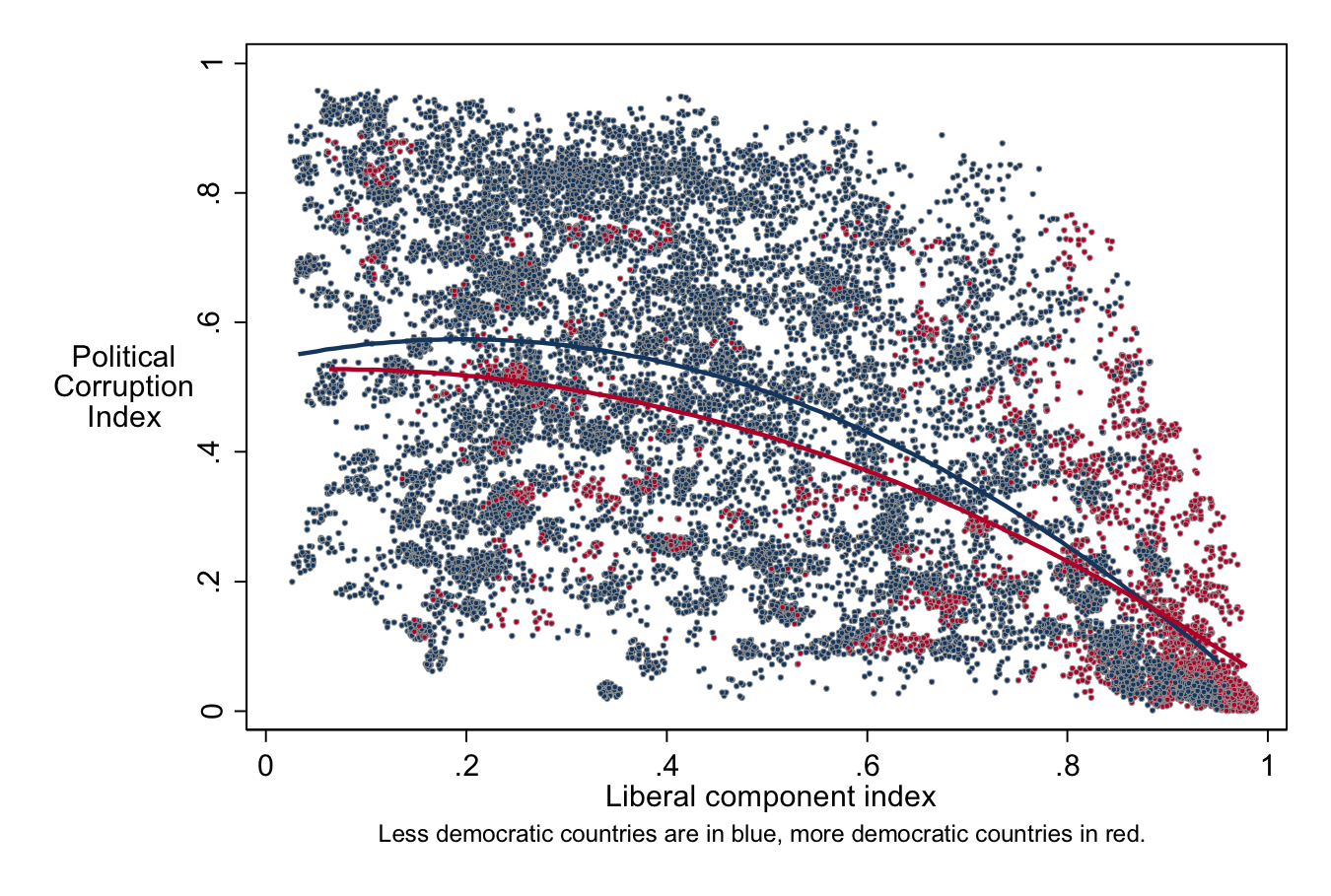The relationship between liberal democracy and corruption
By: V-Dem Staff
Jan 26, 2016
Many people believe that one of the best ways to fight corruption is to promote democracy: if public officials know they are accountable to voters, they will be more honest. Is this true? If we drill down into V-Dem data a bit, it seems that what matters most is the liberal component, which captures legislative and judicial constraints on the executive, as well as equality before the law and individual liberty. In this graph for all available country-years, the more corrupt countries score high on the Political Corruption Index and less corrupt countries score low. Overall the liberal component makes little difference until it reaches fairly high values; but especially above 0.8, corruption tends to be quite low. This relationship is very similar for both non-democratic countries (Electoral Democracy Index less than 0.75, plotted in blue) and relatively democratic countries (Electoral Democracy Index of at least .75, plotted in red). The blue line shows the relationship for the less democratic countries and the red line shows the relationship for the more democratic countries. There are relative electoral democracies and electoral non-democracies at all levels of the liberal component, and although on average the more democratic countries tend to be less corrupt, the differences are not great. The big difference is made by very high levels of the liberal component. What this suggests is that, although accountability to voters matters for other reasons and is intrinsically desirable, accountability to other public officials may reduce corruption more powerfully, perhaps because the legislature and courts are better positioned to monitor and sanction the executive closely and constantly.


